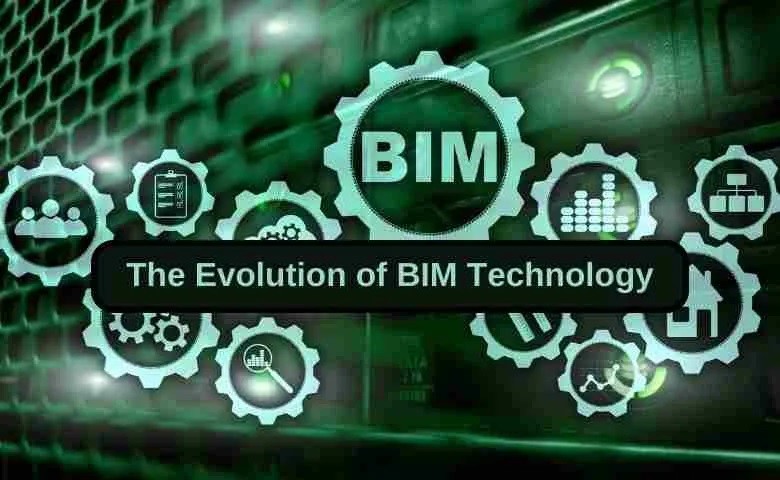Table of Contents
ToggleThe dynamic realm of the Architecture, Engineering, and Construction industry demands efficiency as a significant driving force toward success. It provides a competitive edge to the AEC professionals and allows them to explore the evolving cutting-edge technologies.
One of the transformative and thriving developments in the technological domain is Building Information Modeling (BIM). Embracing BIM Modeling services as a cornerstone tool revolutionizes the way of planning, designing, executing, and managing projects.
The potential of BIM explores the extent of construction efficiency, promising significant cost and time savings. Harnessing the maximum potential of BIM services requires a strategic implementation of the finest practices on the construction site.
Evolution of BIM in the construction industry
Initially, BIM was introduced to the AEC sector for visualization purposes, enabling architects and designers to develop realistic project representations. Since its inception, BIM has treaded a long way with continuous advancements in technology features and benefits to the project. Now, it is integrated as a data-rich tool enabling collaboration, coordination, and decision-making throughout the project lifecycle. The 3D Modeling Services offer not only the digital representation of the project but also a vast amount of information about its various nuances.

The BIM model includes information about the structural integrity of the structure, the cost of material used, and the energy efficiency of its systems. This information helps in identifying potential issues, design optimization, and making informed decisions. With a shared digital platform architects, engineers, and contractors can work concurrently on the project in real time, make changes, and resolve conflicts efficiently. BIM Modeling services provide a comprehensive and informative approach to building design and management.
Key Features of the BIM Application
BIM modeling services facilitate digital representation of the physical, technical, and functional features of the structure. Here are the few beneficial features of BIM technology:
- 3D Modeling
BIM is not a mere 3D modeling software but a process that provides insights to facilitate plan, design, management, and construction of various projects. It provides an overall three-dimensional view of the project from all possible perspectives to present a clear picture to the clientele.
- Collaboration
3D BIM modeling services enable real-time collaboration among all stakeholders, including architects, designers, engineers, contractors, and project owners. The transparency eliminates information silos and allows for efficient collaboration and coordination among the stakeholders.
- Monetary Benefits
The BIM modeling services help in detecting clashes and errors at the initial stage before the construction work starts. This reduces rework or clash rectification, minimizing the scope of cost overruns.
- Visualization and Simulation
The 3D visualization allows the stakeholders to understand the building’s behavior and appearance early in the design process. The stakeholders can simulate different scenarios, visualize the building’s response to various situations, and make informed decisions accordingly.
- Information Management
The BIM modeling entails details and project data related to the design, construction, and maintenance phases of the project. This information facilitates project management throughout the project lifecycle.
- Time-Saving
The early clash detection and planned project schedules enable work execution on time, without causing any delay or rescheduling. This allows the stakeholders to stay within time constraints and finish the project with great accuracy and precision.
Common Applications of BIM
BIM technology offers a wide range of applications across the AEC sector. Some of the most common applications of BIM include:
- Architecture
BIM Modeling services help architects with building design optimization and 3D visualization, enhancing the overall functionality and aesthetic of the structure.
- Construction
BIM helps construction professionals and building contractors improve project coordination, reduce waste, and reduce the risk of construction errors and blunders.
- Engineering
The engineers can optimize building systems with the efficient application of BIM to the process, reducing the risk of construction errors and increasing energy efficiency.
- Facility Management
With optimized use of BIM services, facility managers can ensure improved building maintenance, reduce energy consumption, and enhance occupant comfort.
Role of BIM Modeling Services in Maximizing Construction Efficiency
3D BIM modeling services serve as a pivotal tool for construction projects, catering to every step of the process and enhancing the project outcome. Let’s explore the various roles that BIM plays in maximizing the construction efficiency of the projects:
- Efficient Resource Allocation
Integrating BIM modeling services into any project simulates the impact of various planning decisions on the project’s budget and timeline. The stakeholders can consciously opt for suitable resources that align with the design intent and offer ease of application and use. The BIM process offers efficient resource allocation, reducing wastage and budget overruns. The project stakeholders can analyze and deduce the most favorable choices for project execution that enhance construction efficiency and provide seamless execution.
- Enhanced Design Visualization and Simulation
3D BIM modeling services significantly facilitate the development of detailed and accurate 3D project models. These models reflect a realistic view of the final built environment, enabling stakeholders to better understand the design intent. The visualization before construction eliminates potential clashes and conflicts, resulting in better quality outcomes.
The project visualization and simulation allow stakeholders to make informed choices regarding the design, material, and execution process on the construction site. They can identify flaws, and blunders, evaluate alternative options, rectify discrepancies, and optimize the design to ensure maximum efficiency. The proactive addressing of issues saves time and costly revisions during construction.
- Streamlined Construction Process
BIM plays a significant role in streamlining the construction process, resulting in maximum project efficiency. One preferable process is quantity takeoffs, where BIM allows for accurate quantity extraction from the digital model. Quantity takeoffs eliminate the need for manual estimation, saving time and minimizing chances of potential errors.
Cost estimators can quickly calculate material costs, project-related expenses, and labor expenses with accurate quantities readily available with BIM. This results in more precise project budgeting and cost control, enhancing overall efficiency. BIM also aids in optimizing construction sequencing which helps in identifying potential clashes or delays beforehand. The project schedule ensures that construction activities are carried out in the most logical and time-saving sequence. This optimization majorly increases construction efficiency.
- Enhanced Communication and Collaboration
BIM modeling services serve as a powerful tool that fosters communication and collaboration among project stakeholders. BIM consolidates all project data into one model, accessible to all major stakeholders of the project. The stakeholders including architects, engineers, contractors, and owners can leverage the digital model to access updated project information. The shared access eliminates the risk of misunderstanding and miscommunication, hence reducing the possibility of rework. The involved stakeholders function on the same page with explicit discourse about the project specifications.
Furthermore, streamlined communication leads to minimal errors and improved coordination. It becomes easier to communicate design changes, and possible suggestions, discuss construction updates, and other relevant information. The seamless flow of information translates into enhanced construction efficiency for AEC projects.
Conclusion
Implementation of BIM modeling services for AEC projects is the future of the industry for maximum construction efficiency and accuracy. This technology drives sustainable and risk-averse planning and on-site execution. Exploration and harnessing such technologies will lead the industry towards a new era of design and construction, fostering growth and innovation. BIM catalyzes better efficiency, project collaboration, streamlined construction processes, and enhanced design visualization, delivering successful projects.

